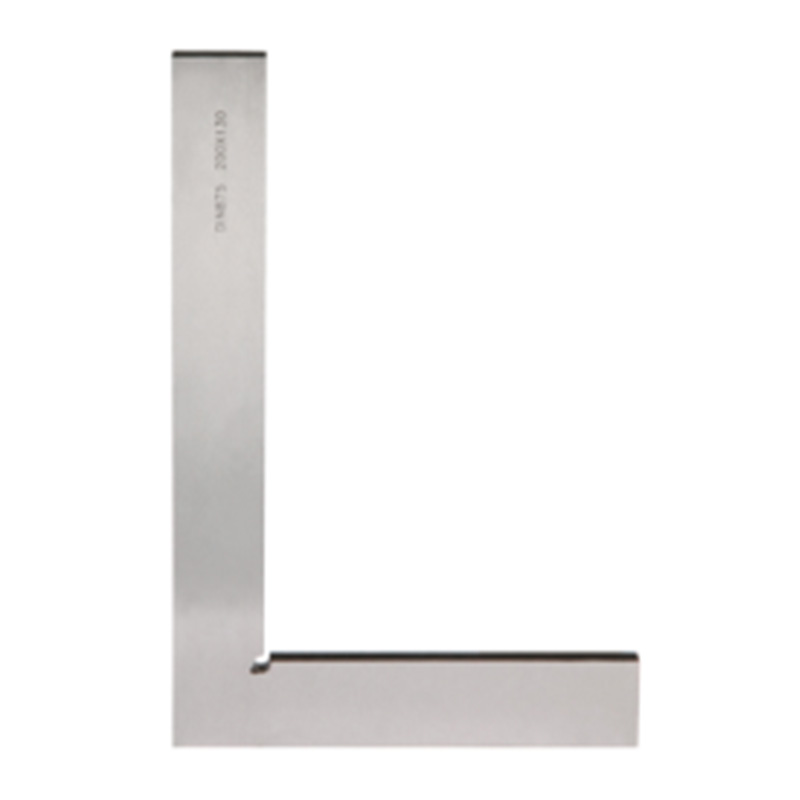Material Choice: The DIN 875 Square is crafted from materials such as hardened steel or granite, chosen for their minimal thermal expansion properties. Hardened steel, often used in precision tools, undergoes a heat treatment process that enhances its hardness and stability. Its coefficient of thermal expansion is very low, meaning it undergoes only minor dimensional changes with temperature variations. Granite, alternatively, is favored in precision applications due to its extremely low coefficient of thermal expansion, making it highly resistant to temperature-induced dimensional changes. This choice of materials ensures the DIN 875 Square maintains high precision and reliability across a range of temperatures.
Design Considerations: The design of the DIN 875 Square is meticulously engineered to mitigate the impact of thermal expansion. Precision squares are machined with exceptionally tight tolerances to ensure that even minor thermal effects do not significantly alter their performance. The geometrical design, including the thickness of the blades and the quality of the finish, is optimized to maintain accuracy. Advanced manufacturing techniques such as precision grinding and lapping are employed to achieve and sustain the required flatness and squareness, reducing the potential for temperature-induced inaccuracies. The tool’s construction includes considerations for thermal stability, ensuring that even if the material expands or contracts slightly, the overall precision remains within acceptable limits.
Environmental Control: In precision measurement settings, environmental control is crucial. A temperature-controlled environment helps ensure that the DIN 875 Square operates within a stable thermal range, minimizing the risk of measurement errors. For high-precision work, fluctuations in temperature can lead to significant inaccuracies if not managed. Specialized laboratories and manufacturing facilities often maintain consistent temperature conditions to preserve the integrity of precision instruments. In such environments, the DIN 875 Square’s performance is optimized, as the effects of thermal expansion are minimized, and the tool's measurements remain accurate and reliable.
Impact on Precision: Thermal expansion and contraction can impact the precision of the DIN 875 Square, particularly if there are significant temperature fluctuations. While modern precision squares are designed to minimize these effects, any substantial deviation from the tool’s specified temperature range can lead to changes in its dimensions. For example, a 1°C temperature change can result in a small but measurable expansion or contraction of the material. In critical measurements, even minor inaccuracies can be significant, so it’s essential to account for these potential variations. The DIN 875 Square’s design aims to limit these effects, but users should be aware that extreme temperature variations can affect measurement precision.
Mitigation Strategies: To ensure that thermal expansion and contraction do not compromise the DIN 875 Square’s accuracy, consider the following strategies: Temperature Regulation: Use the DIN 875 Square in a controlled environment where temperature variations are minimal. This reduces the risk of thermal effects impacting measurements. Allow for Acclimatization: Before using the DIN 875 Square for precise measurements, allow it to acclimate to the ambient temperature of the workspace. This helps ensure that the tool is at thermal equilibrium and reduces potential measurement errors. Regular Calibration: Implement a routine calibration process to identify and correct any deviations that may occur due to thermal effects. Regular checks and adjustments help maintain the tool’s accuracy over time. Environmental Monitoring: Consider using temperature and humidity monitoring equipment in your workspace to ensure that environmental conditions remain stable and within the specified range for optimal tool performance.




 English
English Español
Español
















